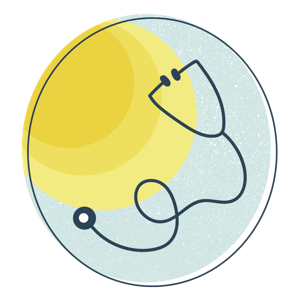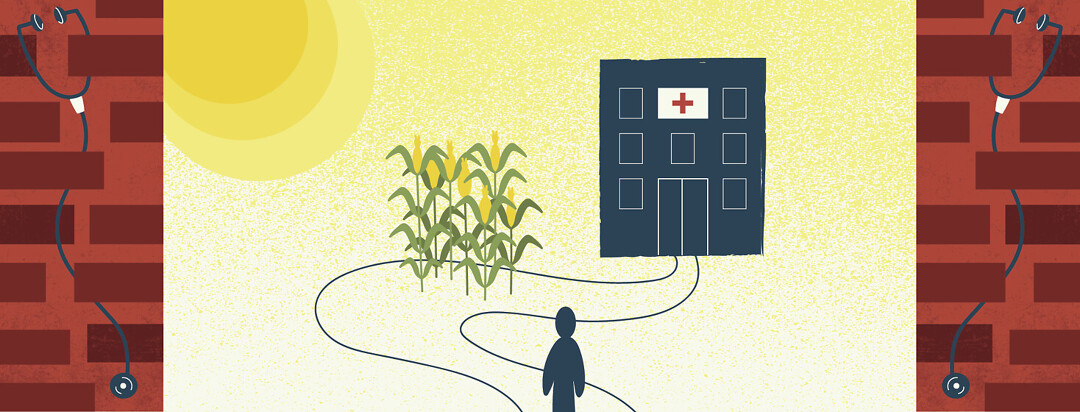Living in the Country Can Make It Hard to Test and Treat Sleep Apnea
You’ll hear the term, “barriers to healthcare access,” more and more these days as research examines the patient-provider disconnect.
Many factors determine one’s access to healthcare. Geography, for example. It creates “pain points” for people with sleep disorders living in populations large and small.
In this article, we’ll look at access barriers for rural residents who need sleep testing and treatment.
An overburdened rural healthcare landscape
The “doctor gap” describes a keenly frustrating problem for healthcare providers in rural areas.
According to data from the National Rural Health Association, just under 40 primary care providers (PCPs) serve every 100,000 people living rurally in the United States. Meanwhile, more than 53 PCPs serve every 100,000 people in more populated areas.1
This uneven distribution of doctors highlights healthcare inequity.
Many who live in rural areas belong to underserved communities. The US Health Resources and Services Administration defines underserved communities as those lacking adequate healthcare services for local residents.2
The impact of limited access
It’s hard to know the true incidence of obstructive sleep apnea (OSA) in rural areas. Typically, a person with suspected OSA must first get a referral to a sleep doctor through their PCP. In areas with limited access to a PCP, waitlists may extend far into the future.
With fewer doctor visits and less opportunity for referrals, a lot of people in rural areas won’t pursue help for their sleep-breathing problems. And yet, research on filed claims for OSA testing and services show it’s on the rise in rural America.3

How? When? Where?
Logistics are a big part of the access problem.4
- Transportation to and from appointments may be limited.
- Rural patients receiving a telemedicine link for sleep disorder visits may still face the “digital divide” (unreliable internet access).
- Climate matters: Snowstorms, wildfires, earthquakes, hurricanes, floods, and tornadoes can paralyze rural communities, further disrupting healthcare access.
- People living in mountainous areas have special concerns with OSA. Changes in elevation affect the body’s ability to maintain adequate levels of oxygen while asleep.
- Long-term power outages in rural spaces can shutter clinics and prevent people from using positive airway pressure (PAP) machines.
Even when people are already diagnosed or confirm their OSA through a test, other problems emerge.
- Provision of PAP supplies can be delayed due to less reliable delivery or bad weather in rural areas.
- People with OSA benefit from patient-to-patient support. A smaller population will have fewer support groups.
The COVID-19 connection
People with OSA (diagnosed or not) are 8 times more likely to be infected with COVID-19.5
Meanwhile, outbreaks, overwhelmed healthcare staff, and limited protective equipment are problems that COVID-19 brings to rural communities. This can cause lack of access to testing or treatment for sleep disorders.
The field of sleep medicine has reconsidered the necessity of classic in-lab studies for potential OSA patients. Home sleep apnea tests (HSATs) and telemedicine provide safer options right now. If popular and effective, these procedures may persist beyond the pandemic. 6
Emerging solutions to rural healthcare inequity
The push to fix both the “doctor gap” and the “digital divide” isn’t always successful or sustainable.
The Veterans Affairs (VA) Healthcare System tested a community outsourcing model in Northern California which allowed members of the VA to get their sleep disorder services closer to home. However, this model didn’t work out. Instead, it resulted in longer times from referral to therapy and a greater disconnect in appointment follow-ups.7
Still, there’s hope on the horizon.

Reasons for hope
Telemedicine
The sleep medicine field has embraced telemedicine for years now.8
While its initial focus was outreach to rural communities, the efforts have since pivoted to patients in need of sleep services during the pandemic.9
Hospital-based screening
People living in rural communities are especially vulnerable to risk factors for OSA. More hospital-based screening for OSA in these areas could identify and serve those in need when local testing is unavailable.10
Enhanced PCP diagnostic services
PCPs are consulting with sleep medicine providers to find ways to streamline specialty care.11
They may use “telementorship” to provide some of the early diagnostic services that identify and diagnose OSA in their rural patients.12
Research continues in earnest with a concerted focus on access and receipt of OSA care for rural residents. The larger goal? To fix ongoing healthcare inequity in rural communities.13
Having a home sleep apnea test in the near future?
Sleep clinics serving rural communities face the dilemma of lost HSAT kits. A small number of patients who take these kits home fail to return them or delay their return.
The pandemic places these expensive test kits in high demand for good reason: They’re the safest OSA tests available.
When these kits aren’t returned, this burdens both clinics and new patients. The US Food and Drug Administration (FDA) recently approved a disposable HSAT, but not all clinics have these on hand.14
This article is part of a series: Sleep Apnea’s Health Disparities. Check out the other articles in this series!

Join the conversation